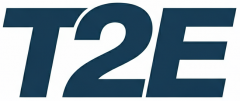Continuing our discussion on cyber controls, it’s important to recognize that personnel are crucial in defense. They can either be a weak link or serve as a key defense against cyber threats. Employees often have access to sensitive information, making them prime targets for phishing and other cyber-attacks. Therefore, as a tech executive, implementing consistent cybersecurity awareness training is vital. This training ensures that all employees understand their role in information security and are equipped with the knowledge to identify potential threats. By fostering a culture of security, organizations can significantly reduce the risk of breaches and protect their valuable data.
Here are strategies for an effective awareness program.
- Regularly train employees: Ensure employees are aware of evolving cybersecurity threats and are equipped to identify and prevent attacks. Use workshops, online modules, or interactive simulations for engagement and up-to-date knowledge.
- Encourage a “zero-trust” mindset: In today’s interconnected world, it’s vital to instill this mindset in employees. They shouldn’t automatically trust any email, website, or person seeking sensitive info. By verifying requests skeptically, employees can avoid falling for phishing or other tricks.
- Use real-life examples: To emphasize cybersecurity’s importance, demonstrate actual cyber-attacks and their outcomes. This can include case studies, news articles, or security expert demos. Seeing the impact firsthand helps employees prioritize cybersecurity.
- Make training interactive: Traditional methods may be boring. Keep employees engaged with interactive elements like quizzes, games, or role-playing scenarios to apply knowledge in real-life.
- Offer learning resources: Cybersecurity evolves constantly, hence the need for accessible tools like newsletters, webinars, online courses, and certifications. Continuous learning empowers employees to stay informed on current threats and best practices.
- Lead by example: As a tech executive in your organization, it’s crucial to demonstrate cybersecurity best practices. Follow security protocols yourself to set a strong example for your employees, influencing them to prioritize cybersecurity too.
- Promote a security culture: Establishing a robust cybersecurity culture is vital for protecting sensitive data. Encourage open communication, report suspicious activity, and reinforce security practices. Cultivating this culture ensures employees prioritize cybersecurity daily.
In today’s digital age, cyber-attacks threaten businesses.
Cybersecurity awareness training with interactive elements, ongoing resources, a tech exec leading, and promoting a security culture can minimize risks. Cybersecurity is everyone’s responsibility. Let’s unite against cyber criminals to safeguard our organizations.
Click here to see a post on the importance of a tech exec understanding cyber threats.
Click here for a post on the value of CISSP certification.
You may also like:





